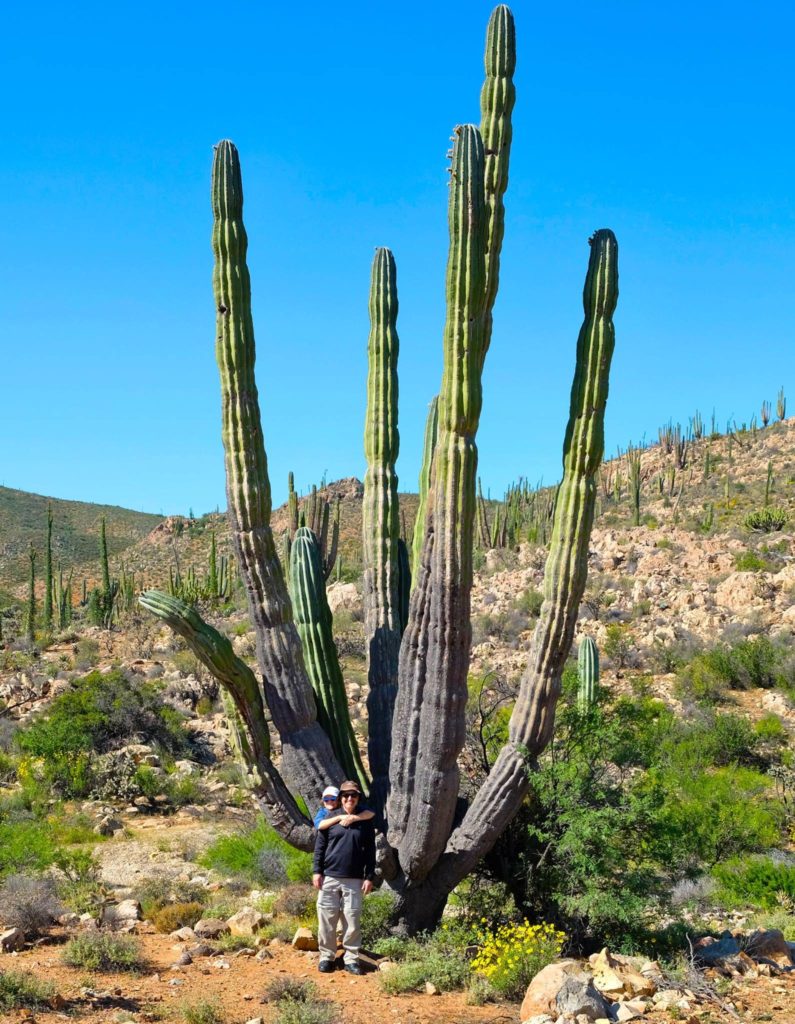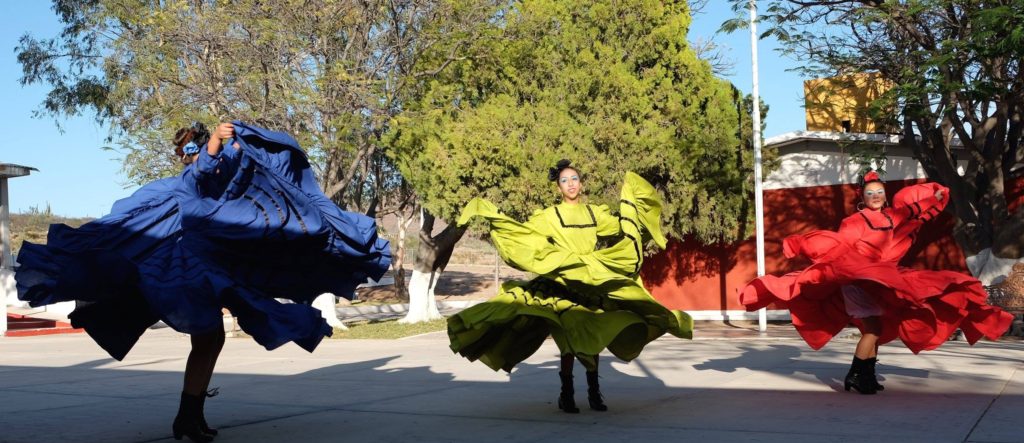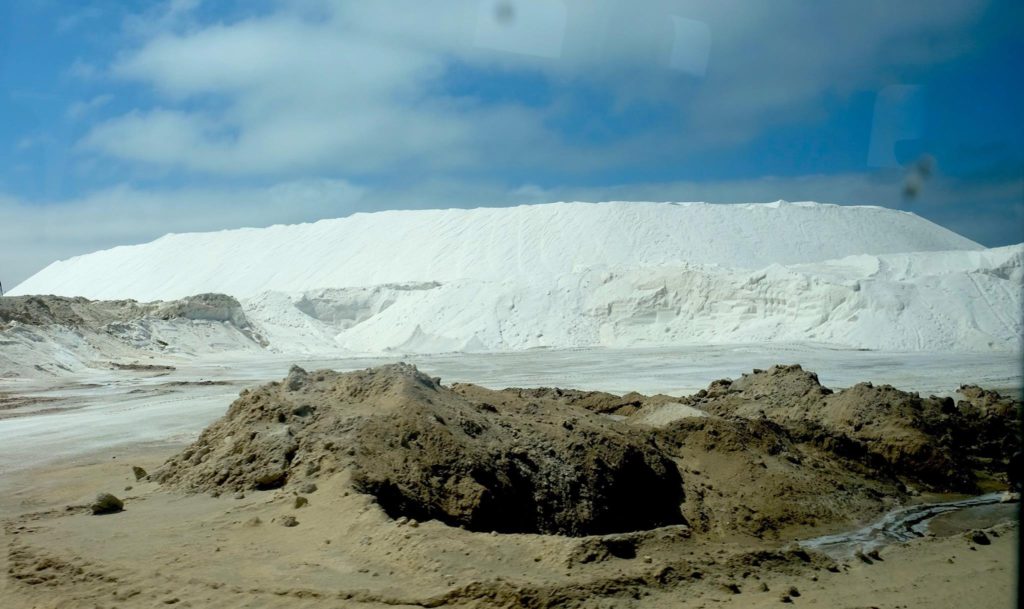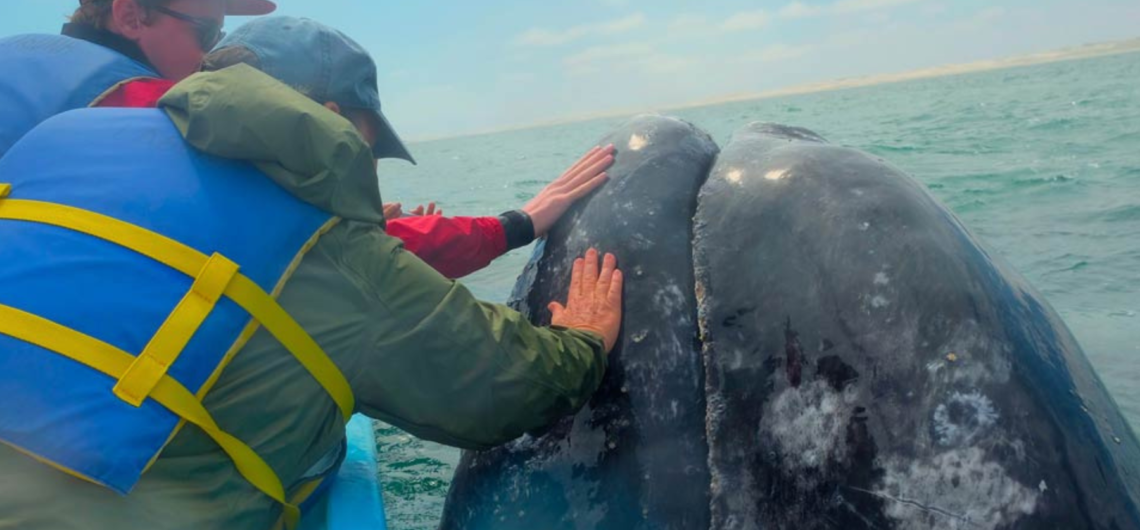Okay, you MUST add this Baja, Mexico gray whale trip to your bucket list. Words and photos can’t describe the thrill. From January to March each year, Mexico’s San Ignacio Lagoon is full of gray whales who have migrated from Alaska’s Bering Sea to give birth to their calves in Baja’s warm water. People from all over the world go to the designated protected wildlife refuges about 500 miles south of San Diego, California for close encounters with these majestic mammals.

You can fly to the destination, but the drive through Baja’s Sonora Desert entertains with its 100,000 square miles and 105 different types of cactus. The cardon — a relative to the saguaro — grows as tall as a hotel and live up to 200 years!

At the peninsula’s 28th parallel is Guerrero Negro where the gentle giants spend the winter months. Guides are mandatory. Each boat — panga — holds 10 people. I suggest stellar Malarrimo Eco-Tours. Within 30 minutes playful gray whales and their babies approached the boats. They are so friendly, swimming around and under the boat. Passengers reached out and petted them as they interacted with us. Jose, the captain, said over 2,000 whales were counted in the lagoon!

The next day in the San Ignacio lagoon the Baja gray whale trip reached another level of AMAZING !!! Adventurers KISSED the behemoths! Yes, a big smooch on their beautiful wet noses !!!!! The proud moms wanted everyone to meet their sweet offspring so they nudged and lifted them upward towards the panga! The “kids” twirled, blew bubbles, and waved their fins. Pure euphoria filled the boat as passengers cooed at the whales showering them with terms of endearment…”such a pretty baby,” “hi, sweetheart,” “who’s a good whale?” :-).

Without a doubt, gray whale lovin’ is the most memorable part of the Baja trip. But, you can enjoy other highlights of Mexico…
• Salt Mines — Guerrero Negro is one of the largest salt producers in the world. While driving to the whale lagoons, you’ll pass acres & acres of ocean side basins that collect sea water. Sun and wind evaporate the H2O, leaving behind salt. Mountains of the condiment resemble snow. Over 9 million tons are exported each year at the cost of only $17 a ton.
• Folklorico Dancing — a group of high school students entertained travelers with traditional dances found in Mexico’s villages.
• And meeting the wonderful indigenous people who make Mexico so special.


Related Posts:
10 Photos to Inspire You to Visit La Paz, Mexico

